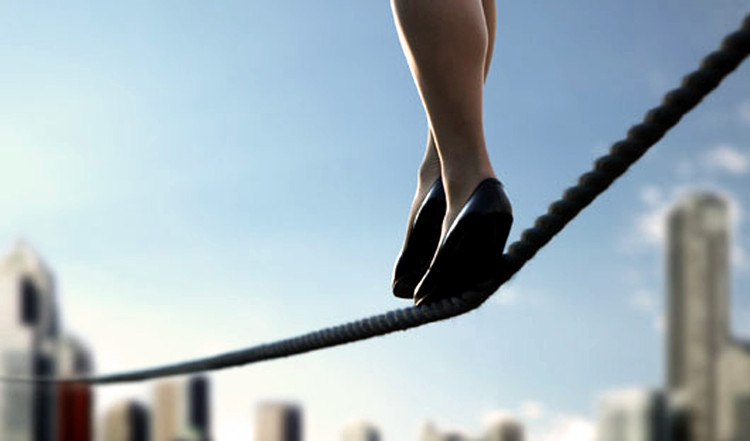Why is the ability to balance less quickly after age 40?
A recent study said that at age 40 onwards, the system that helps us balance will be significantly reduced.
To carry out the study, scientists conducted the vestibular examination of 105 participants between the ages of 18 and 80. The vestibular is a nervous system located behind the cochlea with a coordinating function. The movement between the eyes, head and body simultaneously detects gravity and sends signals to the brain. Most importantly, this is the system that helps people maintain balance and self-direction.
In the experiment, participants sitting on chairs placed on a flat surface can create small shifts in different directions. They are required to report back whenever they sense movement in a certain direction.

Vestibular is the system that helps people maintain balance and self-direction.
Since then, scientists will proceed to determine the "threshold" of each family's vestibular system. Accordingly, "vestibular threshold" is the smallest movement that participants can feel. Scientists say that the lower the threshold, the more effective the vestibular system is.
According to Live Science, the analysis shows that the "vestibular threshold" tends to increase in participants over 40 years of age. Even this figure increased to 83% every 10 years from the age of 40.

"Vestibular threshold" tends to be higher among participants over 40 years old.
In addition, they conducted another test that closed their eyes and stood on the active foam mattress (a high elastic elastic foam) within 30 seconds to test balance. And the results are not surprising when people with high "vestibular" tendencies have to open their eyes or move their legs to balance and they are also more likely to fall than those with "vestibular thresholds". low.
Because test failures are closely related to balance, scientists say the vestibular system has a significant impact on each person's risk of tripping.

The vestibular system has a significant impact on each person's risk of tripping.
Using data on stumbling deaths in the United States, researchers estimate that the vestibular dysfunction after age 40 is responsible for more than 57,000 deaths a year in the country. this.
They remarked: "These numbers really make us look at this issue more seriously. The world population is aging very quickly and if this situation continues to grow, it will be possible. Therefore, we need to make more efforts in the diagnosis and treatment of diseases related to the deterioration of the vestibular system to minimize possible unfortunate accidents. happening".
- Bumblebee flies well in bad weather
- Atlas robot walks through the forest
- The ballet dancer's balance
- Why do birds sleep on branches without falling?
- Do people really have only 5 senses?
- Explain the first MSC electronic balance system on motorcycles
- Video: Art of stone balance
- Color is also a miracle
- The most exotic animals in 2010
- If you have this medicine, you will learn the piano and foreign language as quickly as ... prodigy
- Lack of vitamin B6 is the main reason why you quickly forget your dream?
- Anti-fall shirt
 'Fine laughs' - Scary and painful torture in ancient times
'Fine laughs' - Scary and painful torture in ancient times The sequence of numbers 142857 of the Egyptian pyramids is known as the strangest number in the world - Why?
The sequence of numbers 142857 of the Egyptian pyramids is known as the strangest number in the world - Why? History of the iron
History of the iron What is alum?
What is alum?